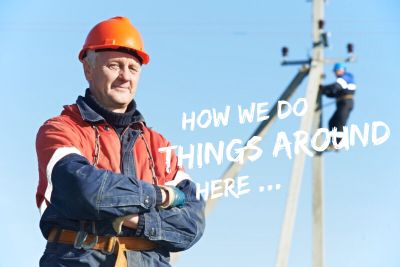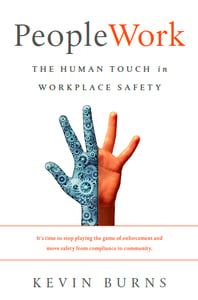If you want to change the safety culture, you have to change the way you do things around here.
 There has been a lot of talk on the subject of safety culture recently. But for those that have a hard time defining what safety culture really is, let’s turn to Wikipedia’s definition. “Safety culture is the attitude, beliefs, perceptions and values that employees share in relation to safety in the workplace. Safety culture is a part of organizational culture, and has been described by the phrase "the way we do things around here."
There has been a lot of talk on the subject of safety culture recently. But for those that have a hard time defining what safety culture really is, let’s turn to Wikipedia’s definition. “Safety culture is the attitude, beliefs, perceptions and values that employees share in relation to safety in the workplace. Safety culture is a part of organizational culture, and has been described by the phrase "the way we do things around here."
“The way we do things around here” is your culture. So, in a nutshell, if you want to change the safety culture, you have to change the way you do things around here. But even the most well-meaning senior executive can be challenged by trying to shift culture. Thinking that a new directive can simply funnel its way down to the front-lines and be adopted to create a new safety culture can be a mistake. There are too many obstacles in the way for that to happen easily.
In order for an organization to shift its safety culture, it will have to lay the groundwork to allow new culture initiatives to be accepted.
Here are three of the first places you will need to start to shift your safety culture:
1Start with crew-code. What you can control is crew-code. Crews are a much smaller collection of employees who work together. They create their own team rhythm and adjust to how they work together. If they are a tight crew, they move easily together. Shifting how a few people view safety is a much easier task than trying to overhaul an entire workplace. But culture is made up of a collection of attitudes, beliefs, perceptions and values. So, you are going to have to shift those individually. You cannot possibly address each of hundreds of employees’ values, beliefs, perceptions and attitudes all at once. You will need a ground-game. You must be willing to address the existing perceptions, values and attitudes of each crew and employee. Moving from crew to crew, addressing how each individual crew “does things around here” creates a foundation to build a new safety culture on. It is detailed work that matters if you want to create buy-in to safety.
2Culture flows bottom-up, not top-down. As outlined in the first point, crew code is the largest contributor to corporate and safety culture. What the people at the front line think, believe and perceive will determine how they do their job (how they do things around here). The heavy lifting happens at the front line. Revenues are generated by production at the front line. People who are going to get hurt usually do so at the front line. There are far more people working at the front line than there are at the senior executive level. Or even the middle management level for that matter. Culture comes from what the majority do. The majority of your employees work at the front line. That’s where safety culture is established and reinforced. What they do at the front line is either agreeable or disagreeable to senior executives from a culture perspective. Policy may be created at the executive level, but it is carried out (or not) at the front line. Whatever new safety culture initiative you want to create, it will be in response to what is already happening at the front line. Culture flows from the bottom to the top.
3Supervisors are the tipping point of safety culture. If the front line supervisors are not on-board, your new safety culture initiative is doomed to fail. Employees take their cues from their direct supervisors. If the supervisors are on-board with the new safety culture initiative, employees will get on-board. If the supervisor thinks it’s another flavor-of-the-week from head office, employees will dismiss it. Employees follow their supervisors’ cues. So, if you want to ensure your safety culture initiative has a fighting chance, you need to get the supervisors on-board first. Without them, there’s little chance of success. Bring your supervisors in for proper management skills training and upgrading. Demonstrate to the supervisors that the organization depends on them to create valued relationships with employees and to safely keep production moving. Make the supervisors feel like an important part of the organization. Then, give them the support and skills they need to do an excellent job in the field. Since employees follow their supervisor’s lead, you have to be certain that the supervisor buys in.
 Safety culture shift is not an overnight project. It will take months and even years to affect the change you may want to see. But it is important to view each of your employees and supervisors as key contributors to how the work gets done. It pays to involve them every step along the way. If you truly want to shift the safety culture, you must be prepared for the long-term investment.
Safety culture shift is not an overnight project. It will take months and even years to affect the change you may want to see. But it is important to view each of your employees and supervisors as key contributors to how the work gets done. It pays to involve them every step along the way. If you truly want to shift the safety culture, you must be prepared for the long-term investment.
Kevin Burns is a management consultant, international thought-leader in workplace safety, and speaker based in Calgary, Alberta, Canada. Kevin has authored ten books on human performance and safety, including his most recent release, PeopleWork - The Human Touch in Workplace Safety.
©2016 ZeroSpeak Corporation and Kevin Burns.
No part of this post may be reproduced without the expressed consent of the author.


